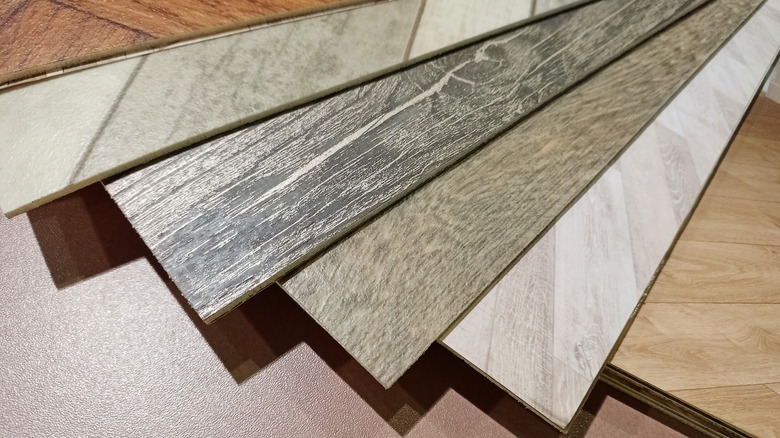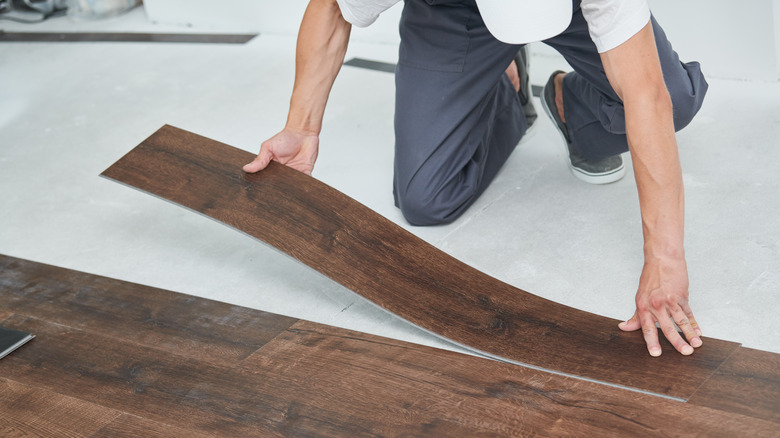What's The Difference Between Vinyl And Linoleum Flooring?
Both vinyl and linoleum are popular, resilient flooring materials. While they are similar in look and texture, there are a few key differences that are important to note.
According to The Spruce, one of the biggest differences between linoleum and vinyl is that linoleum is considered a natural material. Linoleum is made of linseed oil, which creates a flexible, durable coating when dried. It is mixed with other natural materials, like cork dust or wood flour, and pressed into sheets. Linoleum is the older of the two materials and was patented by a man named Frederick Walton in 1860. Walton then created Linoleum Manufacturing Company Ltd. in 1864, and by 1869 the material was being shipped globally. Linoleum rose to popularity because of its durability and versatility. Although it's made of natural materials, it can last up to 40 years, according to Flooring Inc. Because of this, it is the more environmentally-conscious option.
Vinyl pros and cons
According to Flooring Inc., by the 1960s, vinyl had become a popular flooring option. Given its synthetic nature, it can be made at competitive prices. Many buyers began to prefer vinyl as a substitute for linoleum flooring because it is cheaper. Typical vinyl sheets will cost you anywhere from $.50 to $2 per square foot, while linoleum sheets generally cost anywhere from $5 to $7 per square foot, according to The Spruce. Vinyl is also water-resistant, making it a good option for damp areas like basements or bathrooms.
Unlike linoleum, vinyl is manufactured with various chemicals — some considered carcinogenic. An additional concern about vinyl is the carbon footprint connected with its creation and transport (a concern that, in fairness, can apply to broad categories of goods). However, the reality is that vinyl residue may outlast its purchaser, making the disposal of the material challenging. For health- and eco-conscious individuals, buying linoleum may be worth the extra money.

